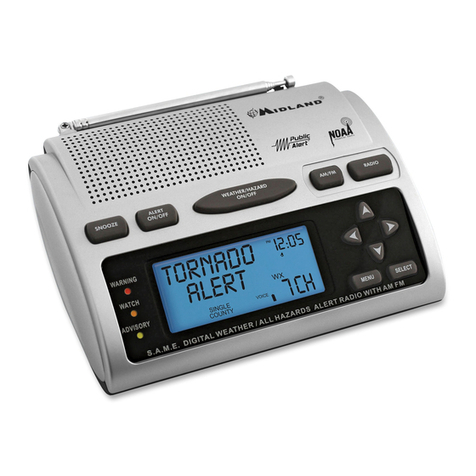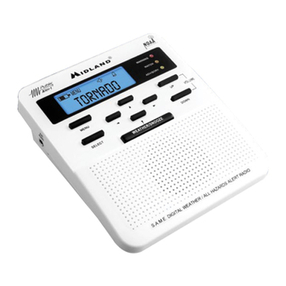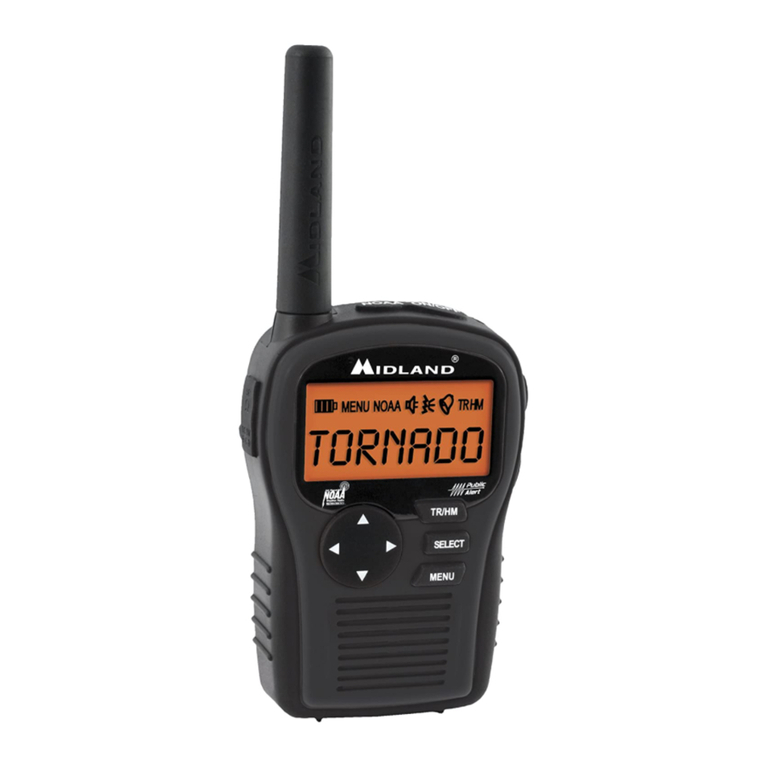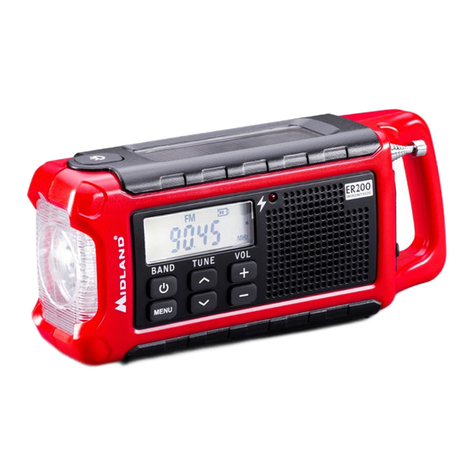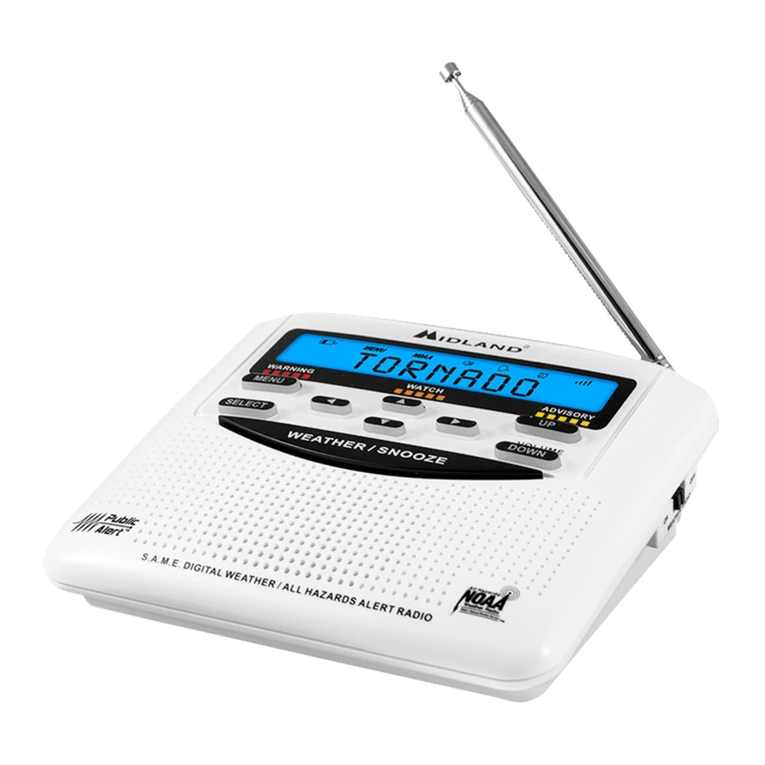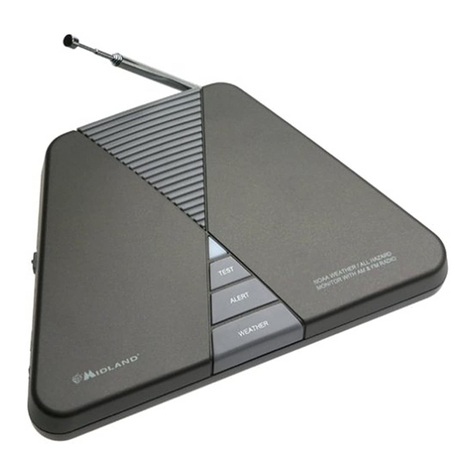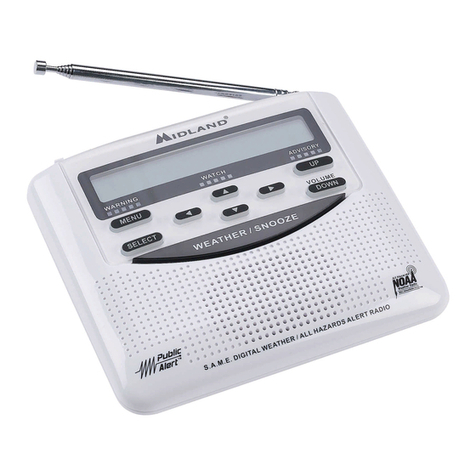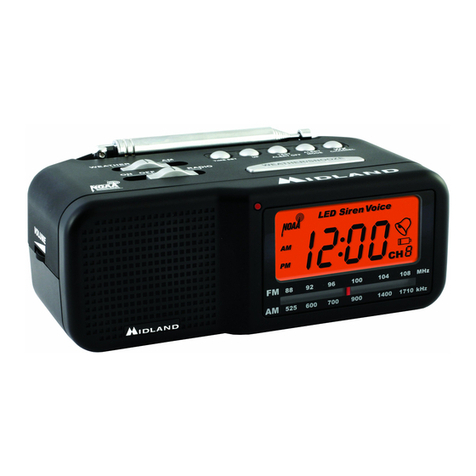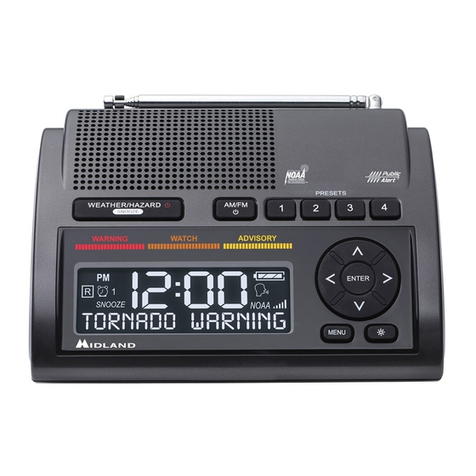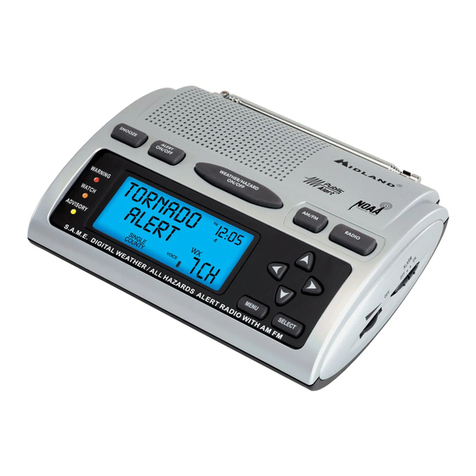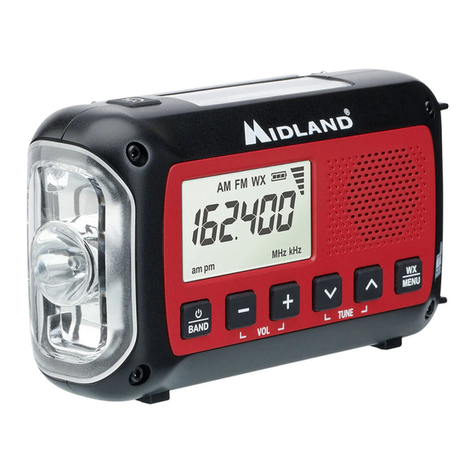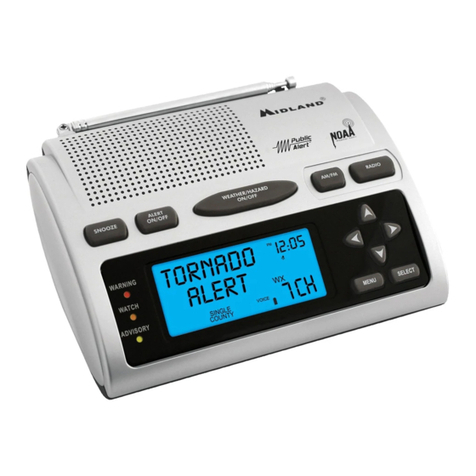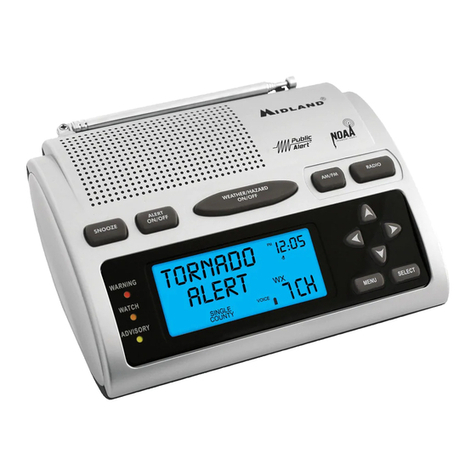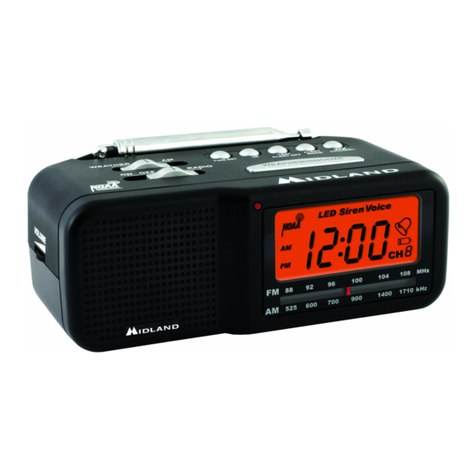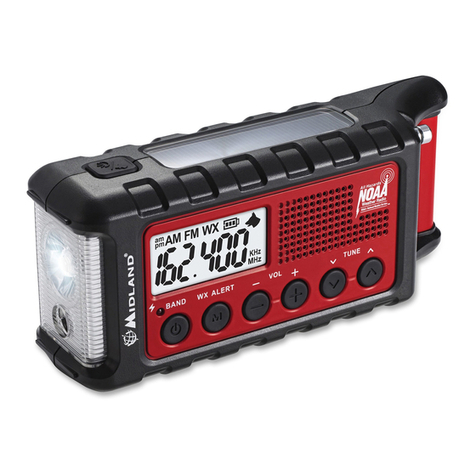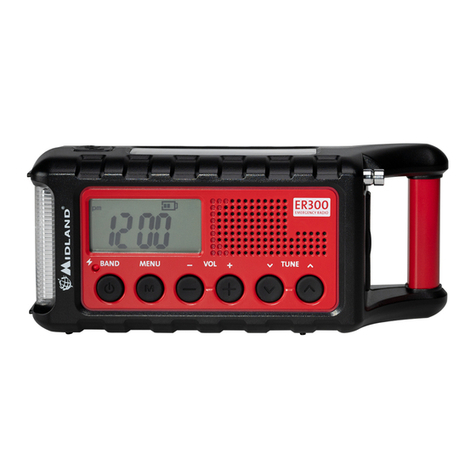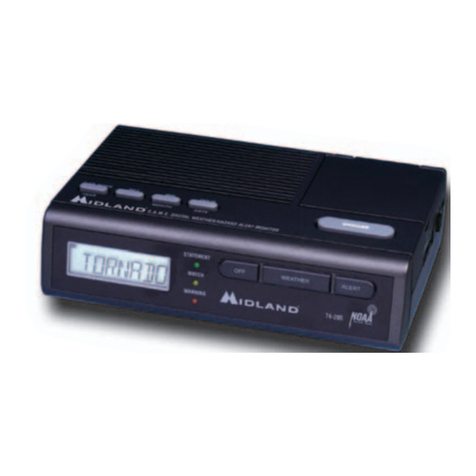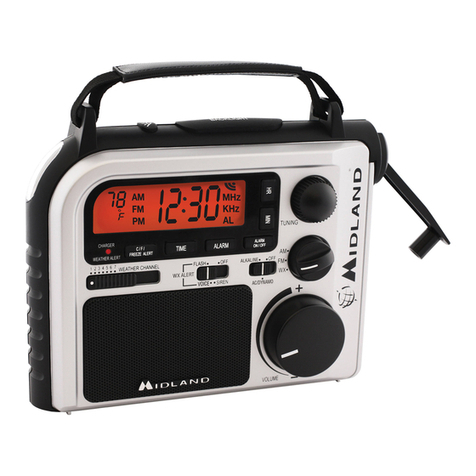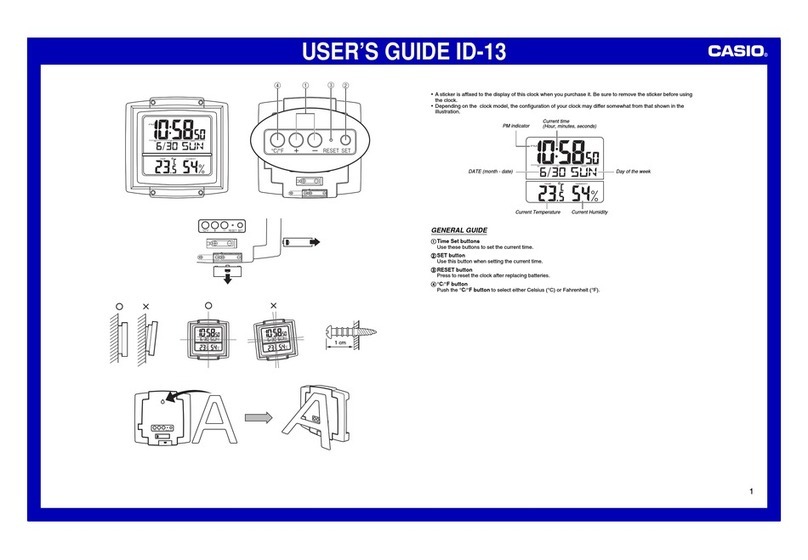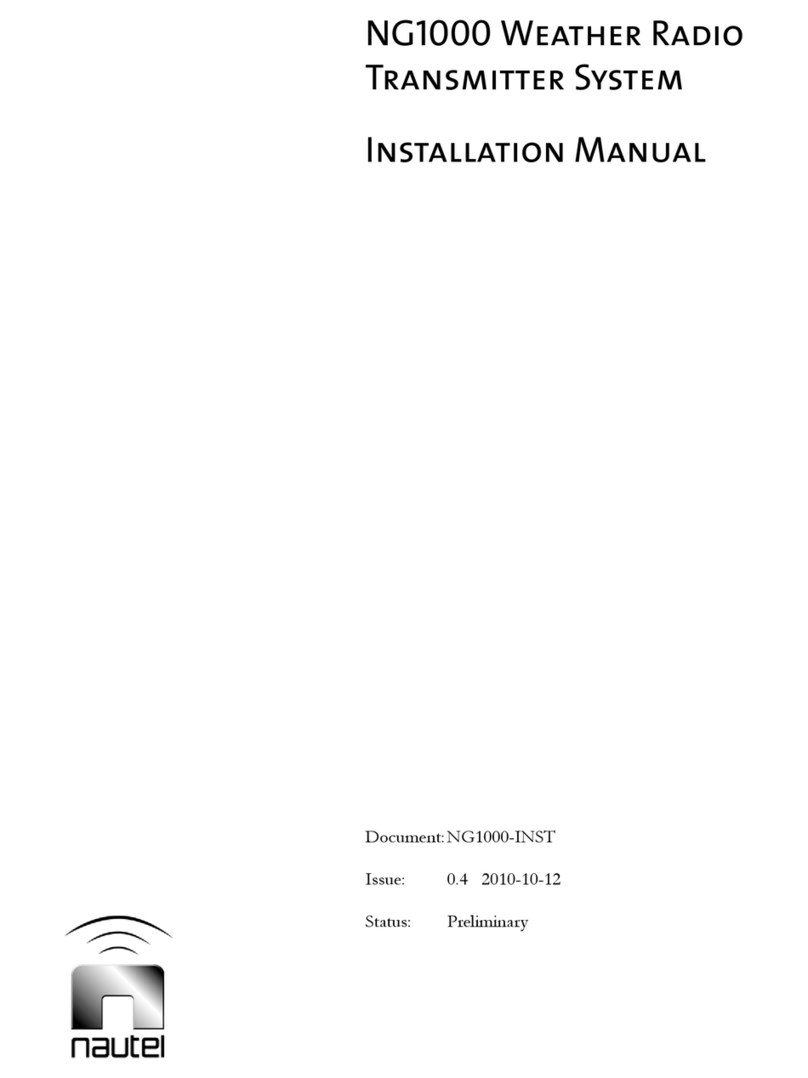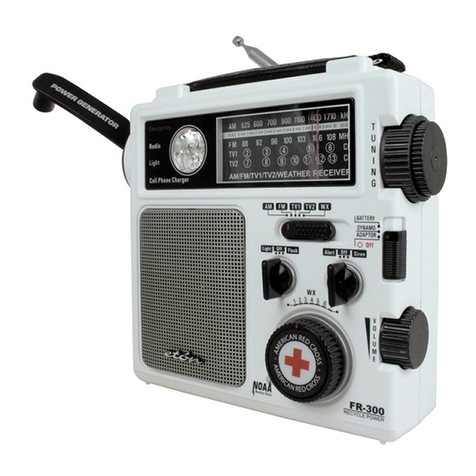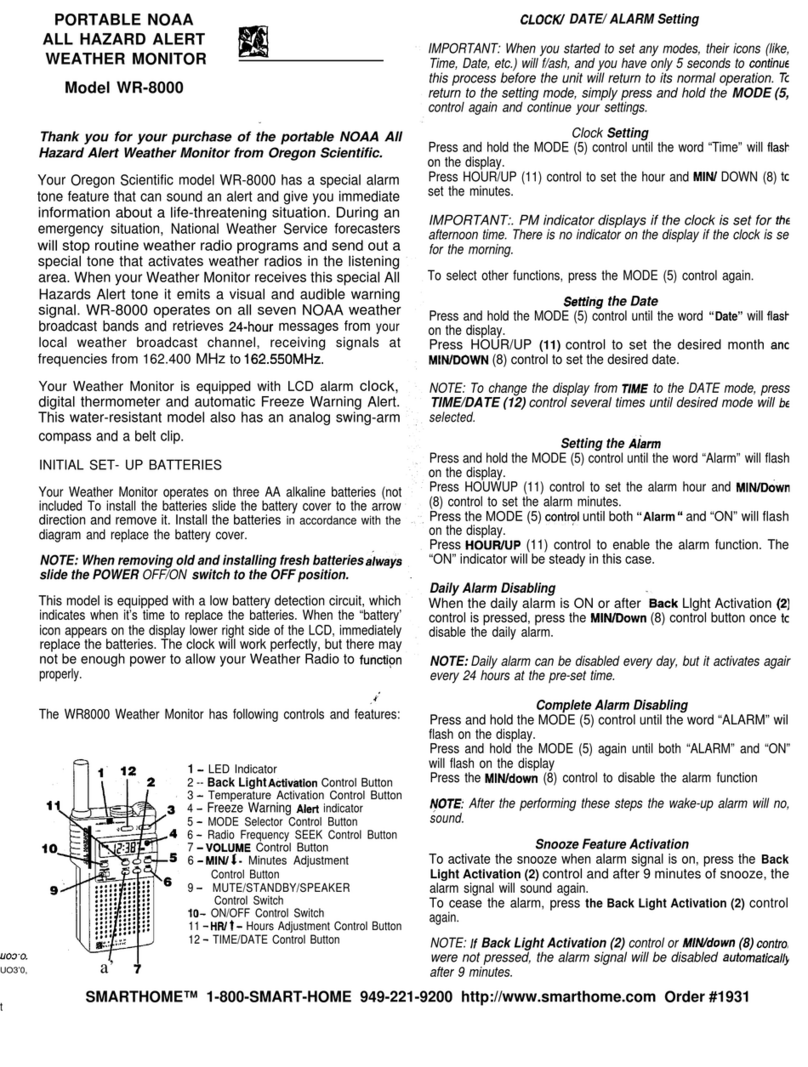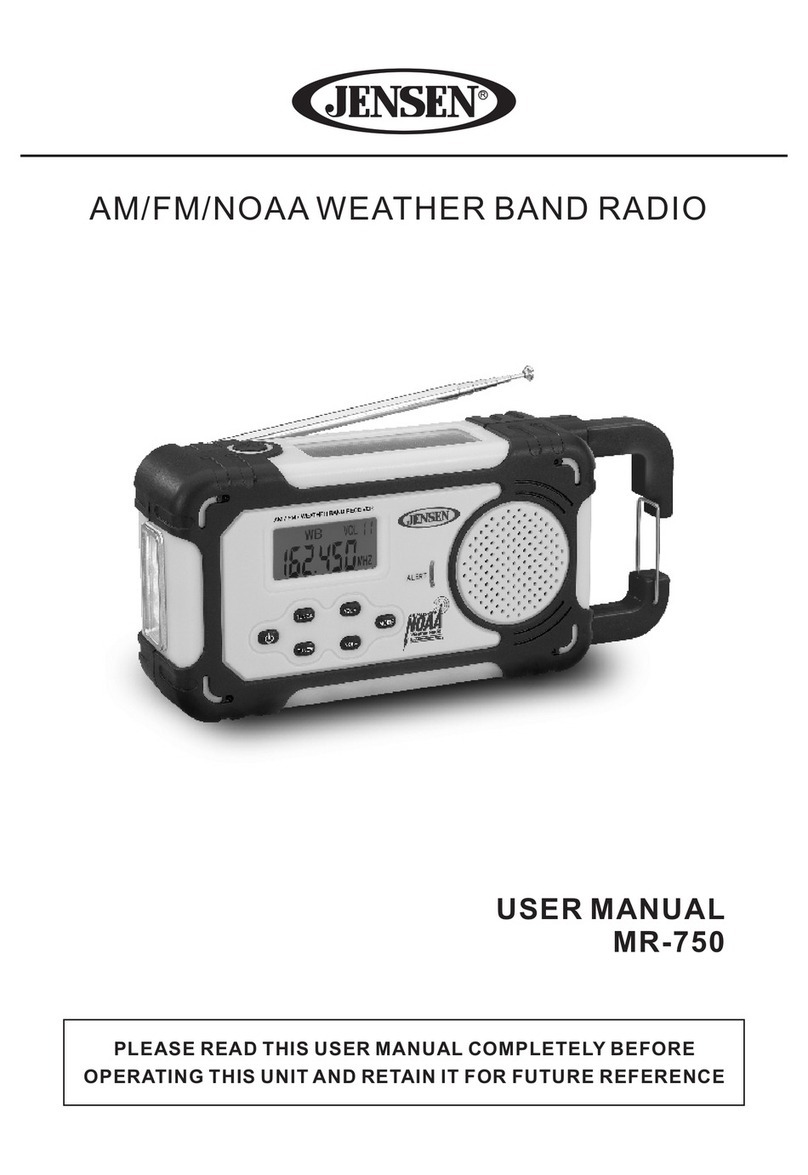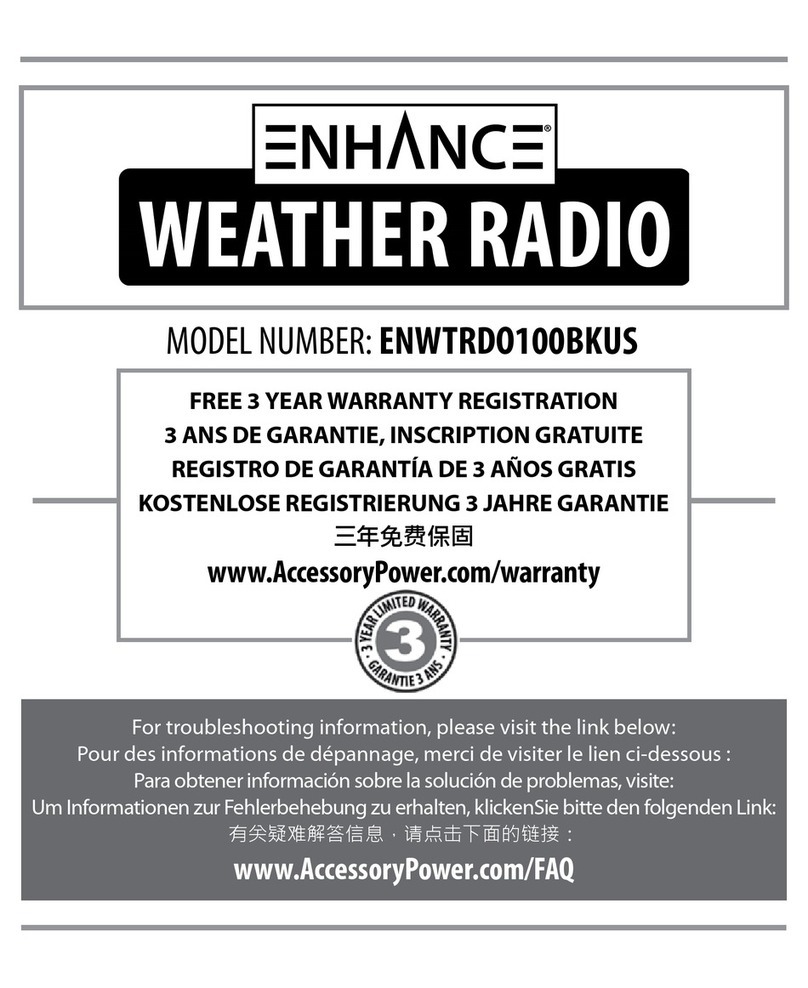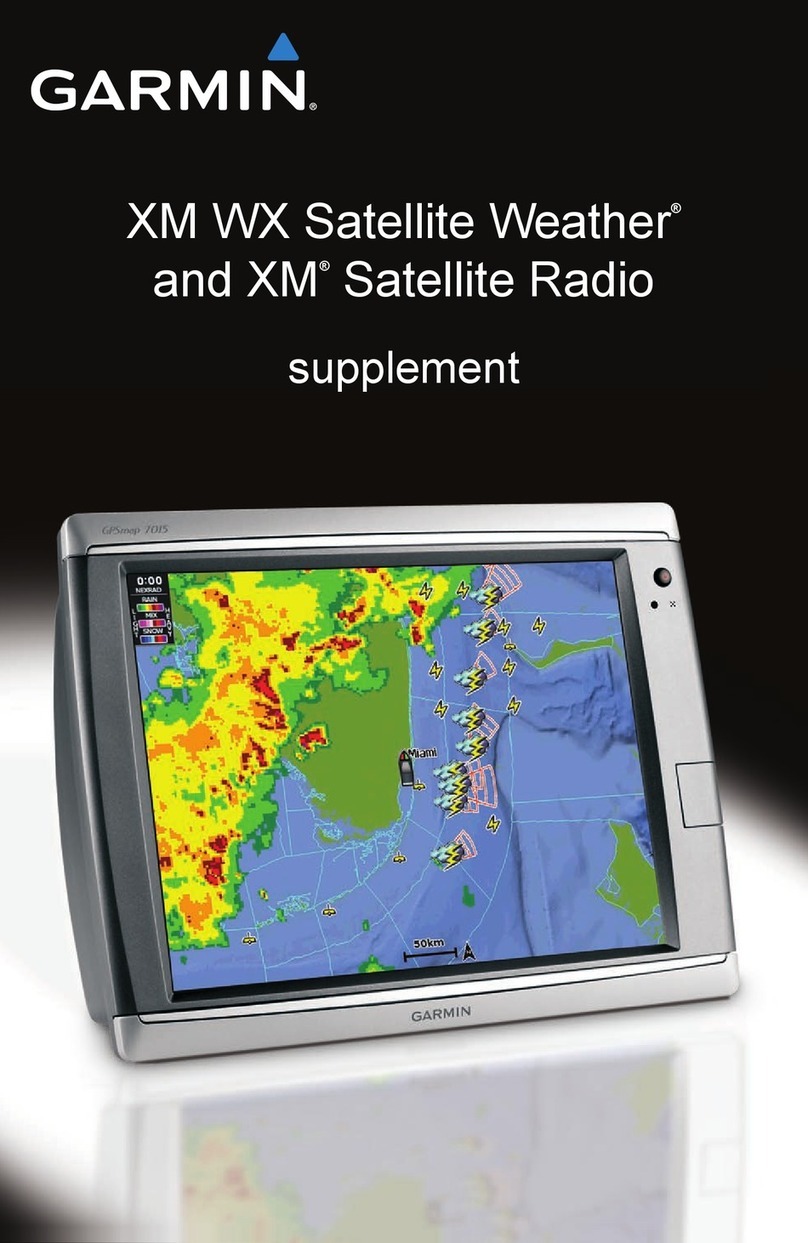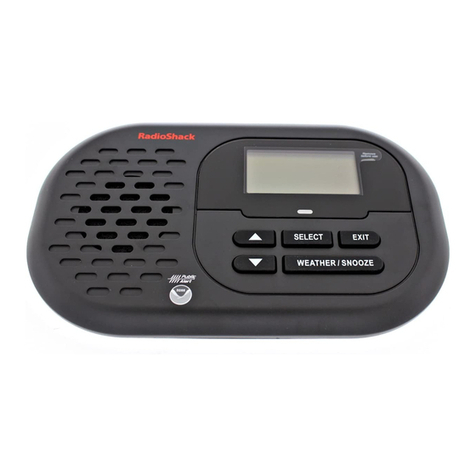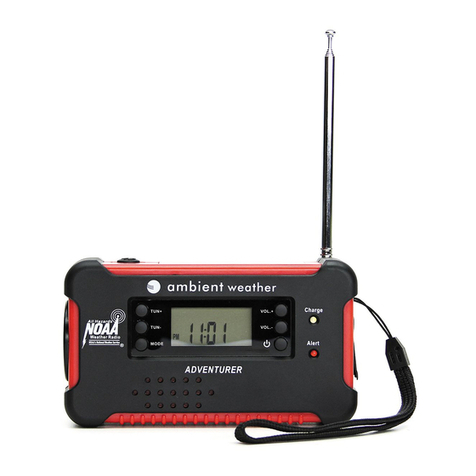
OWNER’S MANUAL FOR THE 74-250
http://www.midlandradio.com Page 4 of 15
NWR-S.A.M.E.- An explanation
In 1994, the National Oceanic and Atmospheric Administration (NOAA) began broadcasting
coded emergency signals that identify the specific geographic area (such as a county) affected by
an emergency. Until that time such specific emergency weather information was sent in other
ways to broadcast stations and others then relayed to the public.
NOAA transmits the coded weather emergency signals using a technique called SAME (Specific
Area Message Encoding). The Midland 74-250 7-channel weather/ all hazards monitor is
designed to receive these SAME transmissions.
Your Midland 74-250 can be programmed with up to 9 predefined county / channels that will
define which notices broadcast by your local NOAA weather station will cause the radio to alert
you. Warnings, watches and statements of weather and other area emergencies, about 40
different types.
Also included in the SAME message is the amount of time for which the message is effective.
The 74-250 will continue to display the alert until its time expires. In the upper left of the display
will be the time the alert was received.
You don't need to wait for the 74-250 to give you an alert. Just find the NWR station
broadcasting to your area from the 7 available channels. You can listen at any time, day or night
to the latest weather information from the National Weather Service.
What is a FIPS Code?
The NWR divides the United States and territories by state and county (or parish) and assigns a
six digit code number called a FIPS (Federal Information Processing System) code or also known
as a NWR/SAME county code. The first digit identifies subdivision. The next two identify the state
or territory, and the last three identify the county. For example the code for Clay county Missouri
is 029047. The"047" indicates the county, the "29" indicates the state, and the "0" indicates the
subdivision of the county. In this case and most cases the code will have a zero for the first digit,
indicating that no subdivision is in use. The NWS plans to introduce subdivisions of some
counties in the future, assigning digits 1 through 9 to the parts resulting in codes like 529047.
Acquiring FIPS codes for the desired Area:
The FIPS codes can be found by calling the NWS toll free number
1-888-NWS-SAME
(1-888-697-7263)
Automated instructions will guide you to the numbers you need.
The FIPS codes and much more information can be found by way of the Internet at
http://www.nws.noaa.gov/nwr
Note: You might want to obtain the codes for other counties close to you or those you might
frequently travel through. The counties still must be within the coverage area of your NWS
broadcast.
This is what to expect when you call the NWS number. You will be prompted to enter your state.
We suggest spelling the entire state to expedite the process. Next you will be prompted to enter
the county. Again spell the entire county. We suggest you locate several counties surrounding
you especially the county in the direction most of the storms will be coming from. When you have
entered the county, the system will ask you to confirm what you entered is correct. Be ready to
write the number. The system tells you the number fairly quick but you have the option to have it
read back to you so you can get the whole number. Remember the number will be six digits long
usually beginning with a zero.
